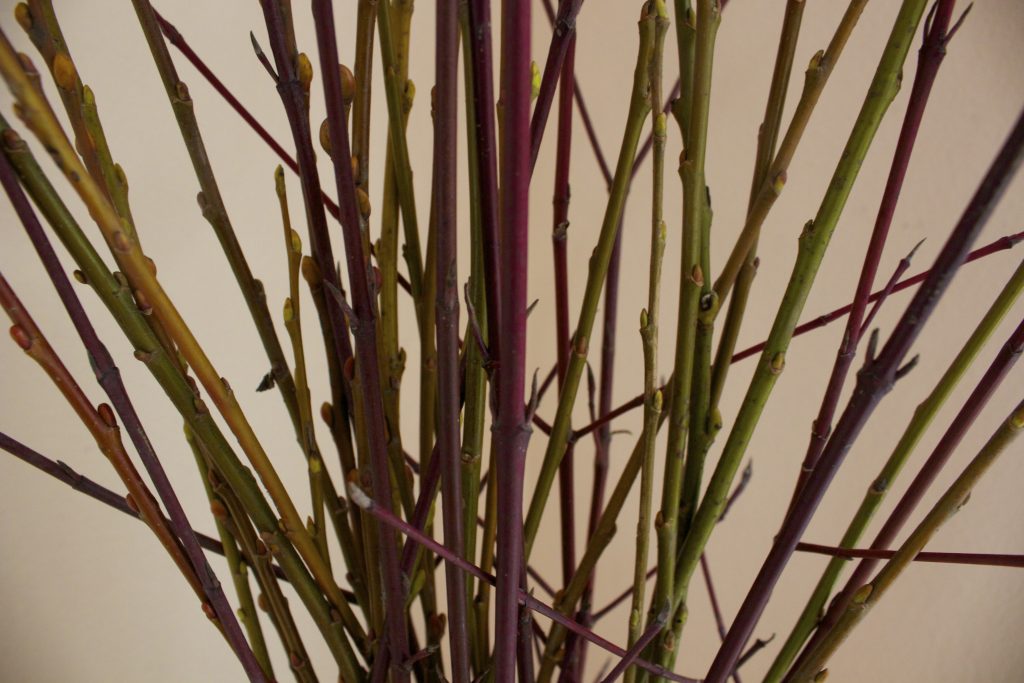Nature Alert: Winter Twig Décor
Home after the Holidays
 Many a Corvallisite can appreciate the warming feeling that comes with bringing home a tree or hanging garlands during the holidays – yet after the New Year begins, we are all too quick to discard any evidence of the natural world. There are still plenty of opportunities to be reminded each winter day indoors that things are still alive, and even in their dormancy, they are beautiful.
Many a Corvallisite can appreciate the warming feeling that comes with bringing home a tree or hanging garlands during the holidays – yet after the New Year begins, we are all too quick to discard any evidence of the natural world. There are still plenty of opportunities to be reminded each winter day indoors that things are still alive, and even in their dormancy, they are beautiful.During your spare daylight hours, collect some cuttings from your garden, neighborhood, or natural areas. To get started, look for twigs from native willow and dogwood bushes in wetland areas.
Young twigs at the tips of willow and dogwood branches may be red, orange, yellow, or lime green, depending on the specific species and the exact environment they are growing in. The plants turn such vibrant hues when sucking up all the nutrients they can from the soil, before they go dormant. The nutrients are stored in their outer stems to give a boost to new growing leaves come spring.
For easiest access, pick one of Corvallis’ parks with boardwalks, such as Jackson-Frazier Wetland or Marys Natural Area. Cut your twigs diagonally with sharp garden clippers at natural junctions in the branches.
It is courteous to only take cuttings from mature plants that are sure to recover, and to avoid taking all your cuttings from one bush. The plant is mature if it surpasses you in height and consists of mostly textured and woody bark, as compared to its colorful outer twigs.
Once you have the desired amount, further cut your selection to best fit in the vases, pint glasses, or mason jars you have at hand. Add fresh water to keep them lively for the longest amount of time possible. Alternatively, you can weave the branches into wreaths, decorating them with moss, lichen, or other foraged accessories.
After some time, you may notice roots beginning to grow from the willow and dogwood twigs. If you let these get long enough, you may find success replanting them outside at the end of the season. This way, you can start your own shrub for continuous winter twig enjoyment while creating more habitat for local wildlife.
By Ari Blatt
Do you have a story for The Advocate? Email editor@corvallisadvocate.com


